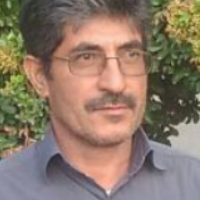Investigating and Analyzing the Place of the Ghulam in the Political and Social Structure of the Safavid Government
The position of the Safavid government in the development of architecture, art, military affairs, and security is not hidden from anyone. The important point in these developments is to what extent the slaves contributed to these developments. Slaves in this study are the special slaves of the government in the Safavid period through which the Safavids consolidated their power. They were slaves who in Safavid historiography were usually referred to as neo-Muslim Christians who were called Shah Doost. The master-slave model, which began during the reign of Shah Tahmasb I, became the most effective tool during the reign of Shah Abbas I to maintain the power of the monarchy against the style of tribal rule. Shah Abbas supported the slaves in order to create a rift in the tribal structure and in return demanded unconditional loyalty from them. The question of the research is what role did slaves play in the structure of Safavid sectarianism, society, architecture, art, and trade, and the hypothesis is that given that the power of slaves was due to the Safavids' sincerity to the Safavid king always in the work of security and They worked hard to spread architecture, art, and trade. This article examines the role of slaves in the Safavid rule according to the available sources in the form of a library.
Safavids , slaves , architecture , Art , trade
-
The relations of the first and second generations of Al-Buyeh with the Abbasid caliphs with an emphasis on Iranism tendencies
Yavar Bizhani, *, Naser Jadidi
Bi Quarterly Journal of Historical Studies of Islamic World, -
Investigating the religious (ritual) and political functions of Persepolis in the Achaemenid period based on its architectural style.
Soltan Ali Karimi, Feizollah Boushas Gousheh *, Ahmad Kamranifar
Islamic Art Studies,


